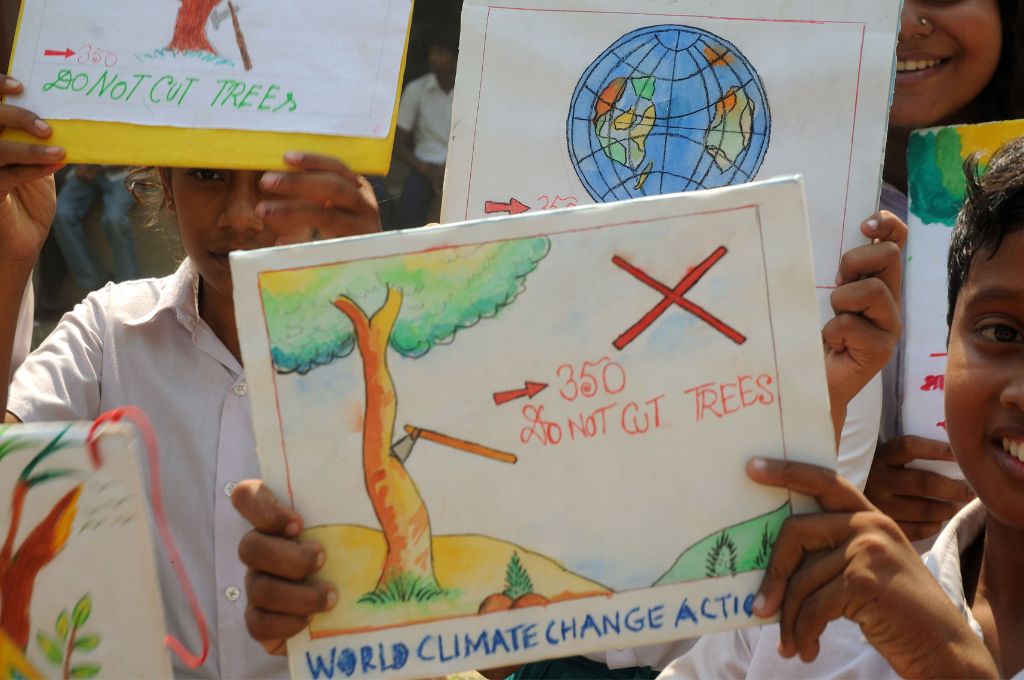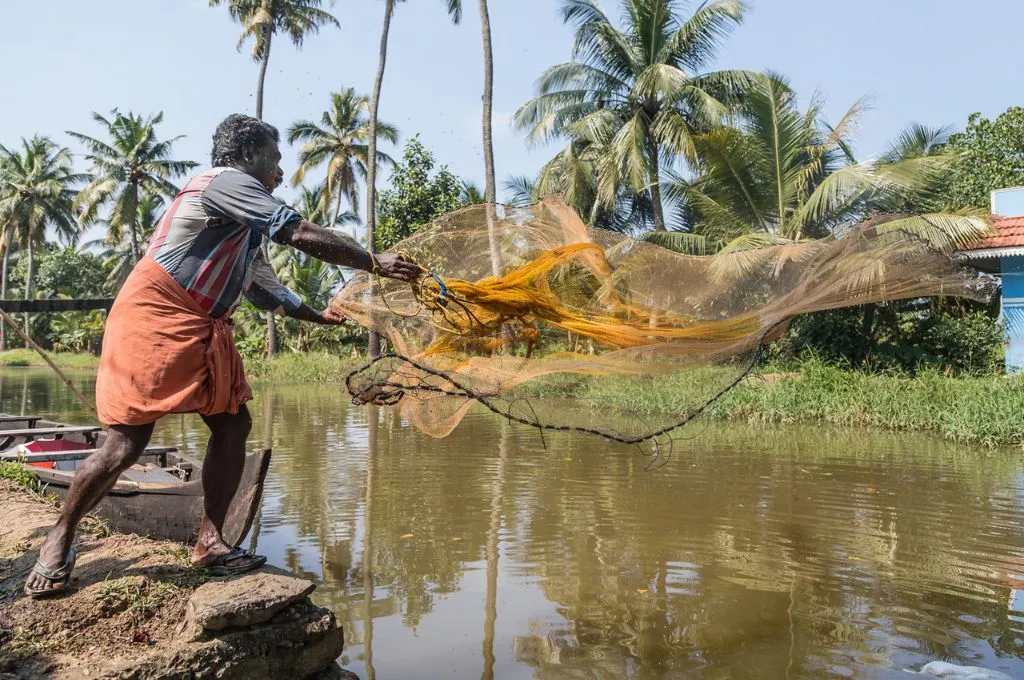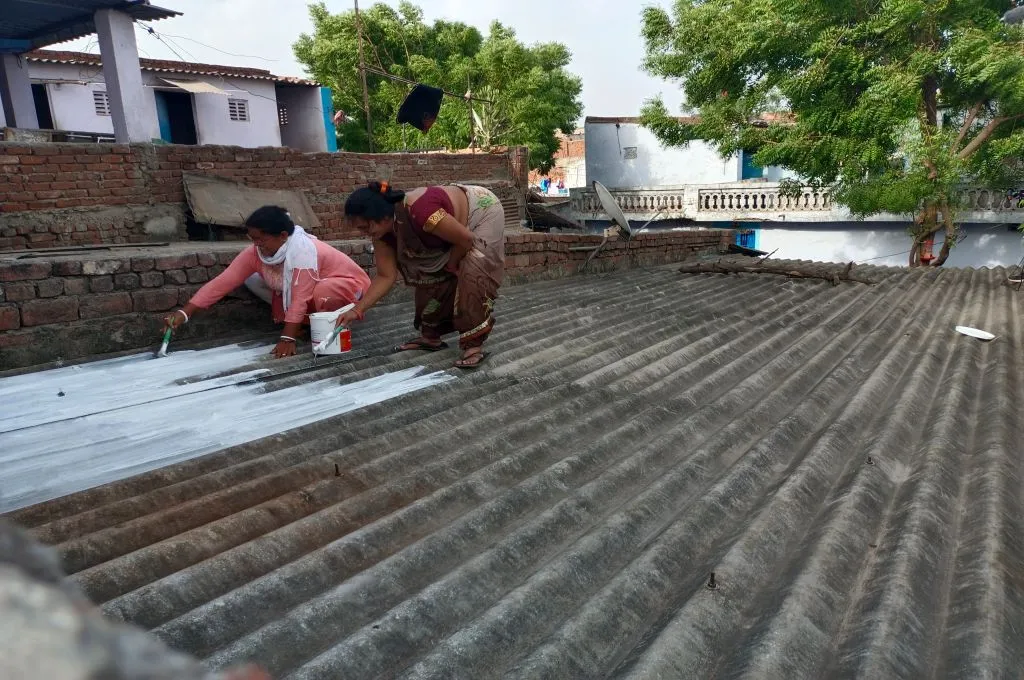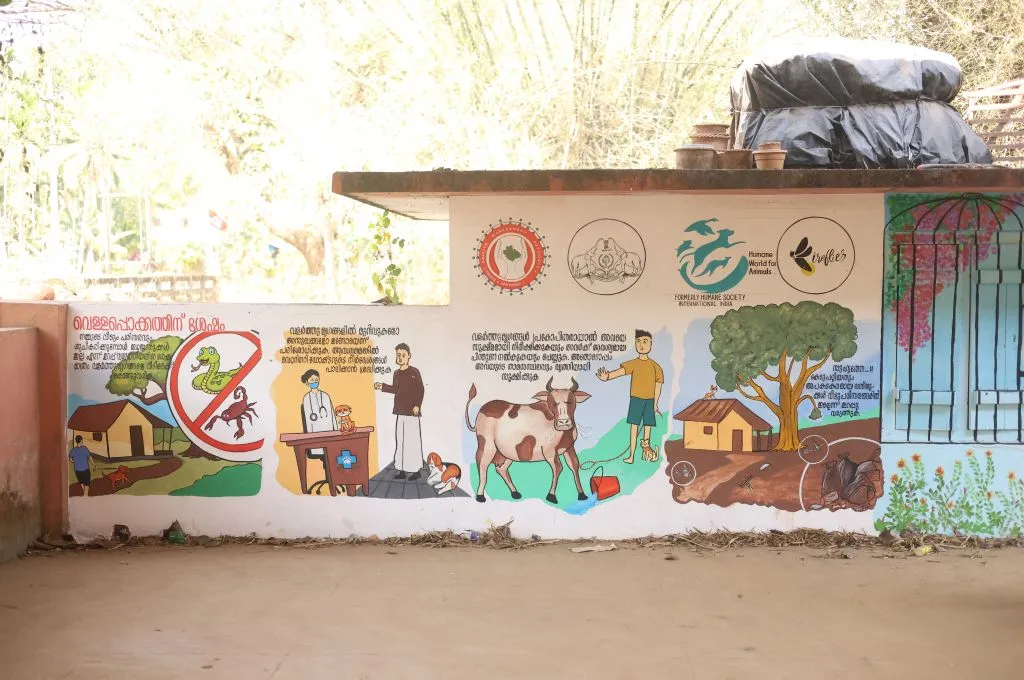1. Anthropogenic climate change
The term ‘anthropogenic’ is derived from the Greek words anthropos, meaning human, and ‘genesis’, meaning origin. It is used to describe something that is of human origin, caused by human activity, or related to human influence. In the context of climate change, it refers to the climate crisis that is primarily driven by human activities, such as burning of fossil fuels for energy generation or the reduction of forest cover that stores carbon. These actions have led to the increase of greenhouse gas emissions in the atmosphere, causing the warming of the planet. While the earth has its own natural cycles of warming and cooling, temperatures have been rising at an unprecedented rate since the mid-1800s. Data shows that the planet’s average surface temperature has increased by approximately 1.1°C since the start of the industrial revolution in 1850, highlighting how human activity has been pushing the rate of greenhouse gas emission. The sixth assessment report by the Intergovernmental Panel on Climate Change (IPCC) also states that human-caused emissions of greenhouse gases “have led to an increased frequency and/or intensity of some weather and climate extremes”.
2. Just transition
A just transition refers to minimising the adverse impacts of the energy transition—from fossil fuel to renewable energy sources—on vulnerable groups and communities. It seeks to address the socio-economic consequences of climate policies so that marginalised communities don’t bear the brunt of the shift. For example, as economies move away from fossil fuel to renewable energy sources, a just transition framework can ensure workers and communities dependent on these industries find alternative sources of income and aren’t left behind in the transition.
The concept of a just transition has its roots in the labour and environmental movements of the 20th century. It gained prominence when it was introduced at the United Nations Earth Summit in Rio de Janeiro in 1992, and then included in the preamble of the Paris Agreement in 2015. This recognition highlighted the need for a just transition lens in global policies to address the unique challenges of the Global South.

In India, coal continues to be a stable source of power. With a growing population, and growing energy demands, the country’s coal usage is stated to peak between 2030 and 2035. With a majority of its population and economy dependent on coal, India has kept away from international treaties such as the Just Energy Transition Partnerships that demand ambitious coal phase-out targets from recipient countries in exchange for financial support.
3. Climate intersectionality
Intersectionality acknowledges the different aspects of a person’s identity—such as race, gender, sexuality, and class—and how they interact with one another. In the context of climate change, an intersectional lens recognises that the climate emergency and its solutions impact individuals and communities differently on the basis of these various socio-economic factors. For example, globally, 80 percent of the population displaced by climate change is female. Women also face higher mortality during extreme weather events, according to studies by WHO. This sheds light on how the climate crisis can worsen existing inequalities, reinforcing the need for more inclusive and equitable solutions.
4. Regenerative agriculture
Regenerative agriculture is a farming system that focuses on soil health and involves a set of practices that minimises the ploughing of the land and use of artificial chemicals and pesticides. It includes methods such as planting different types of crops in rotation and using animal manure and compost to replenish soil nutrients. This in turn improves the soil’s ability to retain water, resulting in less water wastage in farming while simultaneously enhancing the nutrient quality of crops. Additionally, due to improved soil health, farmers have to spend less on inputs such as fertilisers and pesticides. This can help in significantly reducing greenhouse gas emissions from farming while also increasing the soil’s capacity to absorb more carbon from the atmosphere. Thus, regenerative agriculture is an essential part of India’s climate mitigation strategy. In India, Haryana has introduced incentives for promoting crop diversification. Kerala too has committed 84,000 hectares of land to eco-friendly cultivation. Cotton farmers in Madhya Pradesh have also adopted regenerative farming practices.

5. Common but differentiated responsibilities
Common but differentiated responsibilities (CBDR) is a key principle recognised in the United Nations Framework Convention on Climate Change (UNFCCC), guiding global climate change negotiations. CBDR points to the importance of a fair and equitable distribution of efforts and resources in addressing environmental issues. The principle of CBDR acknowledges that the crisis is a universal issue and all countries must contribute. However, it also highlights that, historically, developed countries have contributed more to greenhouse gas emissions and therefore must bear a greater responsibility when it comes to climate action. Additionally, developed nations—with more advanced technology and financial resources—are better equipped to address the climate crisis, while developing countries—facing greater vulnerability—are still pursuing crucial developmental goals. Under this principle, countries have been divided into Annex I and non-Annex I. The former are generally developed countries and have a greater mitigation responsibility than non-Annex I countries.
6. Nature-based solutions
Nature-based solutions or NbS are strategies to address environmental and societal challenges using natural resources. They aim at mitigating climate change while also providing co-benefits such as biodiversity conservation and improved livelihoods for communities. For example, in coastal Gujarat, mangrove restoration is a prime example of NbS, as it offers local communities livelihood opportunities and a buffer against erosion and hurricanes. Additionally, mangroves have a unique capacity to capture and store large amounts of carbon from the atmosphere. In India, NbS are currently implemented under different schemes and programmes including the Mahatma Gandhi National Rural Employment Scheme, as a part of which approximately 60 percent of the activities are related to natural resource management, and the National Action Plan on Climate Change (NAPCC). Additionally, they are a crucial part of India’s climate mitigation strategy as found in the country’s Nationally Determined Contributions.

7. Net zero emissions
Net zero emissions refers to achieving a balance between the release of greenhouse gases into the atmosphere and their removal from it. This involves counteracting the various sources of these gases, such as burning of fossil fuels, with sinks that help absorb the gases from the atmosphere. Forests and the ocean are examples of two natural sinks in our environment. While carbon dioxide (CO2) is the most commonly discussed greenhouse gas in this context, achieving net zero also involves cutting down emissions of methane (CH4) and nitrous oxide (N2O).
Achieving net zero emissions is central to the global agenda of addressing climate change. At COP26, lndia committed to attaining this goal by 2070. Other countries too have committed to reaching net zero—Sweden by 2045, the UK by 2050, and China by 2060.
However, climate scientists have warned that net zero promotes the idea of ‘burn now, pay later’. It focuses on reducing carbon emissions in the near future, which may lead to delayed action in reducing emissions today. This may create more emissions than is possible for sinks, whether natural or artificial, to trap.
8. Decarbonisation
Decarbonisation is the process of moving away from practices that would add more carbon to the environment, and instead moving towards carbon-capturing practices or those practices that would absorb carbon from the atmosphere. Current transportation, agriculture, and land use practices, for instance, are some of the leading sources of carbon emissions globally. Decarbonisation will require a shift from these practices, while simultaneously adopting practices such as afforestation and regenerative agriculture that will facilitate in removing carbon from the atmopshere the long run.
Given that the modern economy is heavily reliant on fossil fuel usage, which is one of the largest sources of CO2 in the atmosphere, decarbonisation will entail a complete economic overhaul and finding alternative ways of living and working.
9. Heat action plans
July 2023 was the hottest month on record—temperatures were 1.5°C higher than pre-industrial times. As temperatures rise, many countries such as India that are highly vulnerable to heatwaves are facing severe repercussions. According to the National Disaster Management Authority, the number of people who have died due to heatwaves in India has been increasing for a few decades. This is where heat action plans (HAPs) come in. HAPs are measures that the state- or local-level administration takes to protect those communities that are at the greatest risk from heatwaves—people working in the unorganised sector, such as daily wage workers at construction sites and street vendors, and gig workers such as delivery executives. An HAP details the preparation required to deal with a heatwave and procedures that should be in place to ensure people aren’t severely impacted. This could include sending regular text alerts when temperatures cross a certain mark; directing resources such as healthcare, financial support, and infrastructural facilities such as shelters and water coolers on streets; organising public awareness campaigns on how to minimise the effects of and protect oneself from a heatwave.
India’s first HAP was introduced in Ahmedabad, Gujarat, in 2013. Other municipalities in India have also implemented HAPs since. However, a study by the Centre for Policy Research on all 37 HAPs identified significant shortcomings in these plans, revealing considerable room for improvement.
10. Wet bulb temperature
Wet bulb temperature is a measure of the temperature that takes into account the cooling effect of water evaporation. It is calculated by covering the bulb of a thermometer with a wet cloth. As water evaporates from the cloth, evaporation cools the thermometer—this is similar to how our bodies cool down with sweat. Simply, it’s a measure that combines heat and humidity to tell us how hot it really feels.
Climate change affects both the intensity and the duration of wet bulb temperatures. With rising temperatures, the amount of water vapour in the atmosphere—what we experience as humidity—also increases. This results in dangerously high wet bulb temperatures. As the air cannot take any more moisture, it becomes harder for the body to cool itself down through sweating, posing a huge health risk.
According to a 2020 study, wet bulb temperatures exceeding 35°C can be lethal. Beyond this point, taking measures such as staying in the shade do not prove effective.
Parts of India, especially northwestern India and coastal regions in eastern India, are especially vulnerable to high wet bulb temperature. Therefore, government bodies must take into account wet bulb temperature when developing HAPs.
11. Distributed renewable energy
Distributed renewable energy (DRE) refers to generating electricity from renewable sources such as solar panels or wind turbines in a way that it’s produced close to where it’s needed. Instead of relying on a central power plant that’s far away, distributed renewable energy systems are often installed on rooftops, in community centres, or even at individual homes. It helps reduce the need for long-distance power transmission and can be more reliable and sustainable. In India, DRE also serves the goal of providing energy access to remote and rural areas where connections to a centralised power grid do not exist. Minigrids are currently being used to meet household and commercial energy needs in Uttar Pradesh, Bihar, and Odisha. According to a report by Climate Policy Initiative, India will require an annual DRE investment of INR 1.3 lakh crore to meet its sustainable energy targets.
12. Loss and damage
Loss and damage refers to the dire repercussions of climate change on the environment and society. Disrupted crop cycles due to unpredictable weather patterns and destruction of property and loss of life due to disasters are some examples. India ranks seventh on the list of 10 countries that are most vulnerable to climate change, and it has the highest level of displacement due to disasters. This makes loss and damage an important part of India’s climate solutions.
Developing or non-Annex 1 countries like India are especially vulnerable to the effects of climate change, such as flooding, rising sea levels, droughts, and heatwaves. To adapt to such conditions, these nations will have to implement a host of measures, such as relocation and rehabilitation of affected populations and building resilient infrastructure. According to the UNEP’s 2022 Adaptation Gap Report, this could cost developing countries between USD 160billion and USD 340 billion by 2030, which necessitates the creation of diverse climate finance options.
This is the reason that loss and damage was a widely discussed topic at COP27. Developing countries claim that developed countries have historical responsibility for climate change, and have called for compensation from the latter to help them address loss and damage that has already occurred and to minimise future loss and damage. This has resulted in the establishment of a loss and damage fund, by developed or Annex 1 nations, with the aim to support developing countries adapt to and build resilience against climate disasters.
13. Circular economy
A circular economy emphasises and incentivises using products for as long as possible and recycling old products for different purposes, with disposal being a last resort. To achieve this, manufacturers need to design products keeping in mind durability, longevity, and longer servicing availability.
By encouraging recycling and reusing, circularity plays a role in slowing climate change. If the raw material required in manufacturing is recycled and not extracted anew from natural resources, there is less ecological stress, since approximately half of all global greenhouse gas emissions are linked with resource extraction. Circularity can also reduce the amount of waste that ends up in landfills, which is expected to double in low-income countries in the next two decades.
China was one of the first countries to adopt circularity by creating a law around recovering resources from waste. In India, 11 focus areas have been identified where a circular economy can be adopted, such as e-waste, scrap metal, rubber, and solar panels. Notably, India is also home to communities that upcycle clothes, such as pheriwalis.
14. Environmental, social, and corporate governance
Economic, social, and corporate governance (ESG) is a framework used to evaluate a business’s governance mechanisms and its ability to effectively manage its environmental and social impacts. This includes looking at a company’s carbon emissions, water consumption, or customer privacy breaches. It is a critical regulatory measure designed to promote sustainable and responsible business practices.
Institutional investors, stock exchanges, and boards of directors are increasingly using a company’s management of ESG-related risks to assess its overall business performance. In essence, it’s about understanding how a company’s ethical and responsible practices affect its success in both financial and societal terms.
India’s efforts to scale back its carbon footprint also focus on reducing emissions from businesses and corporations. This is why the Securities and Exchange Board of India (SEBI), the regulatory authority that oversees the securities market in the country, made it mandatory for India’s top 1,000 listed companies to submit a Business Responsibility and Sustainability Report (BRSR) in 2021. These companies are expected to supply information in the BRSR about any ESG initiatives undertaken, along with information on their performance against nine key principles.
Jasmine Bal and Shreya Adhikari contributed to this article.
Read the first part of this article here.
—
Know more
- Read this article to learn why narratives around climate change need to be simplified.
- Read this glossary of key climate change terms in five languages.
- Read this primer to learn more about climate science and climate risk.




